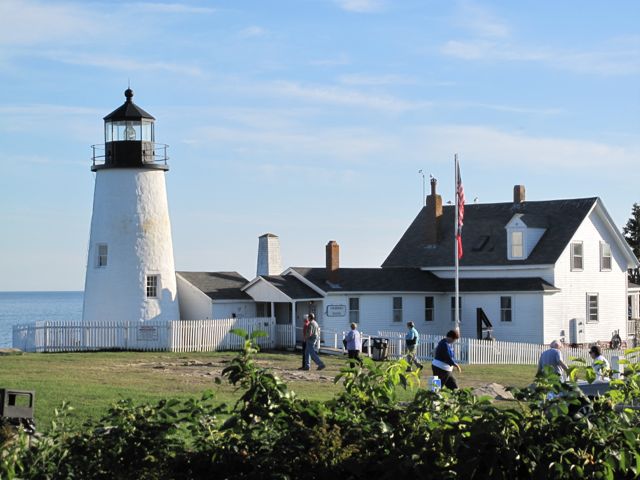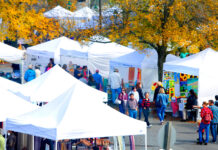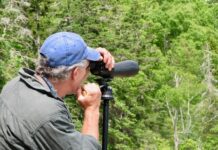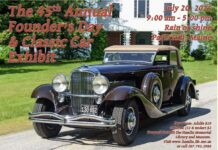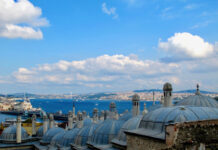
Or not.
In any case, quirky museums often deepen my knowledge about an area, its heritage, inhabitants, and culture. And then again, some make me scratch my head and wonder why here.
Here are some of my favorite odd and quirky museums from around the world. And I know these are but a few of the many treasures awaiting discovery around the globe.
Go under, on, and over water in Rimouski, Quebec

Discover what it’s really like to be in a submarine at the Point-au-Père Maritime Museum. Retired by the Canadian Navy in 2000, the Cold War-era Canadian sub, Onondaga, now rests on the St. Lawrence River shoreline on the city’s eastern side. Visitors make their way through the entire sub on a self-guided, nose-to-tail audio tour. It covers everything from the engines and crew quarters to the galley and torpedo room. It’s tight and cramped, so not a good choice for those with claustrophobia.

And while here, the museum’s other two sights are worth viewing, too. One shares the history of the Empress of Ireland, constructed in 1906 for the Canadian Pacific Steamship Co. It cruised between Quebec City and Liverpool, England, for eight years before meeting colliding with another boat off Point-au-Pic in 1914. Water equal to that filling nine Olympic pools flooded the engine room, sinking the ship in 15 minutes and taking 1,012 of the 1,477 people aboard to a watery grave.
Finally, get a 360-degree, gull’s-eye view by climbing the 128 steps winding up the Pointe-au-Père Lighthouse Tower.
It’s game on at Musée Mechanique, San Francisco

A cacophony of sounds—dings, buzzes, cackling laughter, and music— attracts passersby to enter Musée Mécanique, located in a warehouse building on San Francisco’s Fisherman’s Wharf.
Edward Galland Zelinsky began collecting antique arcade games and coin-operated musical instruments as a child. And, by the time of his 2004 death, he had bought and traded his way to the world’s largest collection. It comprises more than 300 penny-arcade machines, video and pinball games, slot machines, automatons, mechanized musical instruments, and even a steam-powered motorcycle. These range from the traditional to the truly bizarre and the just plain weird. But all are in original working order.
Zelinsky’s descendants now operate this hands-on, interactive museum. A change machine on the premises makes it easy to have the right amount of quarters for each game. Among the options: Watch macabre executions, operate a working farm with more than 150 moving objects, listen to Laughing Sal (shudder), have a fortune teller predict the future, attend a carnival, test your strength, enjoy dancing and singing marionettes, play World Series baseball, or even watch a peep show.
Do note that some options do not meet contemporary diversity, equality, accessibility, and inclusion cultural standards. Admission is free, so even if you don’t indulge your inner child, you can still take in the show.
Find James Bond at 007 Elements in Sölden, Austria

Delve into the world of Bond, James Bond, at 007 Elements. This cinematic installation focuses on Spectre, the Bond movie filmed in Sölden. Getting to the museum is an adventure. It’s built into Tirol’s Gaislachkogl Mountain’s 10,000-foot summit. The easiest access is either by gondola or on skis or snowboard.
In the movie, this is the site of the Hoffler Klinik, where Bond meets Madeleine Swann and where the snow chase begins.
High-tech, interactive exhibits in nine rooms on two floors immerse visitors in all aspects of creating a bond film. That includes stunts, special effects, and cutting-edge technology. You’ll love the Wow! views and be entertained, even if you’re not a Bond fan. Pair it with lunch in the adjacent glass-walled Ice-Q restaurant.
View books chosen for artistic value at the Chester Beatty Library, Dublin, Ireland

Feast your eyes on The Art of the Book exhibition at the Chester Beatty Library, located on the grounds of Dublin Castle. American mining magnet, collector, and philanthropist Sir Alfred Chester Beatty (1875–1968), belatedly knighted for his wartime service, retired to Ireland in 1950. Here he created this library to showcase his rare books, scrolls, and manuscripts from Asia, the Middle East, North Africa, and Europe.
I adore this library and recommend it to anyone visiting Ireland. Here’s what makes this collection special: Instead of choosing works for their literary value, Beatty selected each for its artistic merit. Each is a work of art in itself. Among the treasures in his collection are Egyptian Books of the Dead, richly illustrated Islamic manuscripts, Chinese jade books, Japanese picture scrolls, European printed books, and Old Master prints. Subdued lighting enhances the experience.
Plan a visit to coincide with lunch at the library’s Silk Road Café. The menu, featuring Middle Eastern, North African, and Mediterranean cuisine, pairs perfectly with the exhibition.
Give peace a chance at the Nobel Peace Center, Oslo, Norway

Alfred Nobel wanted to give peace a chance. During his life, the Swedish chemist, engineer, and industrialist amassed a fortune thanks to his creation of an explosive device to detonate liquid nitroglycerin and to the manufacturing of explosives. But that wasn’t all he invented. Over his lifetime, he registered more than 350 patents.
He also wrote books, poems, and plays, although few were published. When he died in 1896, his empire comprised more than 90 munitions factories around the world. And yet, Nobel was a pacifist at heart with a keen interest in culture and peace.
The independent, nonpartisan Nobel Peace Center in downtown Oslo shares not only Nobel’s vision but also those of Nobel Peace Prize recipients.
Burned at the stake in the Witches’ Memorial, Vardo, Norway

Formally known as the Steilneset Memorial, the Witches’ Memorial honors the 91 people burned here as witches between 1598 and 1692. The contemporary seaside memorial, a collaboration between Swiss architect Peter Zumthor and French-American artist Louise Bourgeois, comprises two separate but adjacent buildings. They top a promontory in the raw and treeless Arctic landscape edging the Barents Sea. The somber yet stunning design emulates sail cloth and codfish drying tracks. It draws visitors into a 410-feet long, black corridor illuminated by 91 small windows, randomly spaced and dimly lit by a single, suspended filament light bulb. Plaques on the walls briefly describe each victim.
Like in the Salem Witch Trials in Massachusetts, Norwegian accusers could report on anyone, turning neighbor against neighbor. Accusations ranged from casting spells on people and animals to causing disease or death. Dancing, drinking, and card games could also result in execution. And if the alleged witch floated, that was enough to prove her guilt and seal her fate.

Perhaps the most chilling part of this memorial is “The Damned, the Possessed, and the Beloved,” Bourgeois’ sculpture encased in a dark glass cube. Inside a concrete circle, a steel chair burns eternally, the flames reflected eerily by seven oval mirrors that represent accusers gathered to watch.
Discover Charlie Chaplin’s many talents at Chaplin’s World, Vevey, Switzerland

Child actor. Vaudeville comedian. Tramp. Producer. Director. Musician. Composer. Humanitarian. Foreigner. Liberal. Author. Four marriages. Eleven children. In a life that began in London poverty, progressed to California, and ended in Vevey, Charlie Chaplin experienced all this and so much more.
Immensely popular in the 1920s and 1930s, Chaplin’s fan base declined in the 1940s, when he married his fourth and much younger wife, Oona, faced scandal, and was accused of being a Communist sympathizer. His passport was revoked on a working trip to London with his family. Eventually, Chaplin resettled in a handsome manoir amidst park-like grounds in Vevey, Switzerland.
This property, now Chaplin’s World, brings this brilliant creative mind to life by immersing visitors in his world. Enjoy interactive exhibits and intriguing displays in the house and the purpose-built studio building.
Enter a smuggler’s den at the Customs Museum, Gandria, Switzerland

Alpine mountains plummet to Lake Lugano, which laps Switzerland’s and Italy’s shorelines. That made this lake in the southwest corner of the country a favorite among smugglers. Historically, many in this once-poor area traded in contraband to supplement their meager incomes. They smuggled food-related and other goods, including tobacco, alcohol, sugar, and salt. Now, illicit trade might include drugs, people, animals, and money.
The three-story mustard-yellow Customs Museum is wedged between a mountain and the water’s edge. Sited in a former border guard post in the Cantine de Gandria, this museum focuses on the work and the lives of Switzerland’s Customs officers and border guards. Begin in the past and work your way to the present, viewing permanent and special exhibitions covering smuggling, counterfeiting, and illegal trade. Pair a visit with lunch at one of two grotto restaurants within easy walking distance.
The easiest — and really, only — way to get to Switzerland’s Customs Museum, also known as the Zoll Museum and the Smuggling Museum, is by passenger ferry from Lugano.
Read about Maine’s offbeat, focused, and quirky museums.


